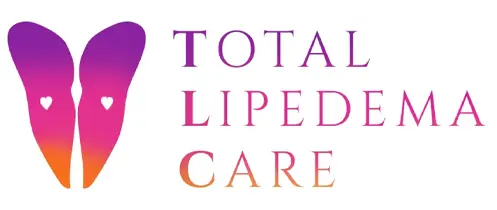Lipedema
in Beverly Hills, CA
Lipedema is a condition that occurs when fat is unevenly distributed in an irregular manner
beneath the skin, most often in the legs, arms, and buttocks.
WHAT IS LIPEDEMA?
- Abnormal build-up of thick connective tissue in areas such as legs, thighs, stomach, buttock shelf, hips, and arms.
- Typically see a large size discrepancy between the upper and lower body. It can be extremely painful and affect daily life.
- Is hormonal and often times begins at puberty and gets worse with pregnancy, birth control pills, and menopause.
- Can become very PAINFUL and limit normal activities such as walking even short distances.
- May increase inflammation in the body leading to “flu-like” symptoms such as brain fog and memory loss.
- Often misdiagnosed as Obesity or Fibromyalgia.
- Affects approximately 11% of women!
UNDERSTANDING THE CONDITION
At Total Lipedema Care (TLC) in Beverly Hills, Dr. Jaime Schwartz offer therapeutic nonsurgical and surgical treatments. You may have heard it called the “painful fat disorder,” or thought people who suffer from this were just extremely overweight or morbidly obese. There is much more to the story. The truth of the matter is that having lipedema is not the same as being fat. How can we know the difference? The adipose cells that form have extra fluid, plus the fat, which causes the area to distort the skin and change its size, shape, color, texture, and sensitivity in one or multiple areas of the body. Fatty areas of the body may show characteristics in the lower body (calves, knees, thighs), the mid-body (torso, hips, buttock, abdomen), and upper arms. As a progressive disorder in men and women, lipedema is not cured — only managed. The fluid buildup can cause chronic pressure and pain in the affected body part (especially if it is near a nerve).

There is ongoing research on what causes lipedema. We do know that it can be genetic, triggered by a stressful event like hormone variations or changes in puberty, pregnancy, or menopause.
This is not a fat disorder for just men and women who are overweight or obese. It can present itself in a person who is underweight — it is not limited to the weight/size of the patient. Diet and exercise modification can help alleviate symptoms but will not eliminate the disorder.
- You have pain and sensitivity in the affected area.
- You feel chronically fatigued or malaise.
- You bruise easily.
- You experience brain fog.
- You have medial knee fat pads.
- Your legs and feet may be swollen after standing or moving.
- You have firm nodules under the skin.
Dr. Jaime Schwartz see patients in all stages and with all types of lipedema who suspect something is wrong or “not right” with their health when diet and exercise are not helping – no matter the level of effort. If you have lipedema, you may feel like you can’t do anything about your situation, but this is not true! The team at Total Lipedema Care is dedicated to helping their patients to feel their best selves.
TYPE I: BUTTOCK
TYPE II: BUTTOCK/HIPS/THIGHS
TYPE III: HIPS/THIGHS/CALVES
TYPE IV: ARMS
TYPE V: CALVES
STAGE I
- Skin is still unaffected (no dimpling or cuffing)
- Body parts may start to look disproportionate but not severe
- Pain occurs but will feel better when the area is in a compression garment or elevated
- Will respond to treatment the best at this stage
STAGE II
- Skin will start to change in appearance (may see a cobblestone-like pattern in the skin)
- Swelling becomes more frequent and longer-lasting, even with elevation
- Lipomas (large, benign tumors) may be present
- Depending on the type of lipedema, Stage II should respond well to treatment
STAGE III
- Tissue affected by lipedema will naturally begin to feel hard and chronically appear swollen
- Connective tissue may feel fibrotic (knotty)
- Large amounts of fat will overhang and distort the shape of the body part
- Early onset arthritis on joints overburdened with the weight of excess fat
- Will not respond well to less invasive treatment methods
STAGE IV
- The most aggressive form of lipedema (will not respond too well to most treatments)
- Extensive swelling and hardening of the legs and arms
- Multiple areas will have flaps of skin and folds of fat that overhang on the body
- Can develop lipo-lymphedema (non-pitting edema will present as pitting edema)


